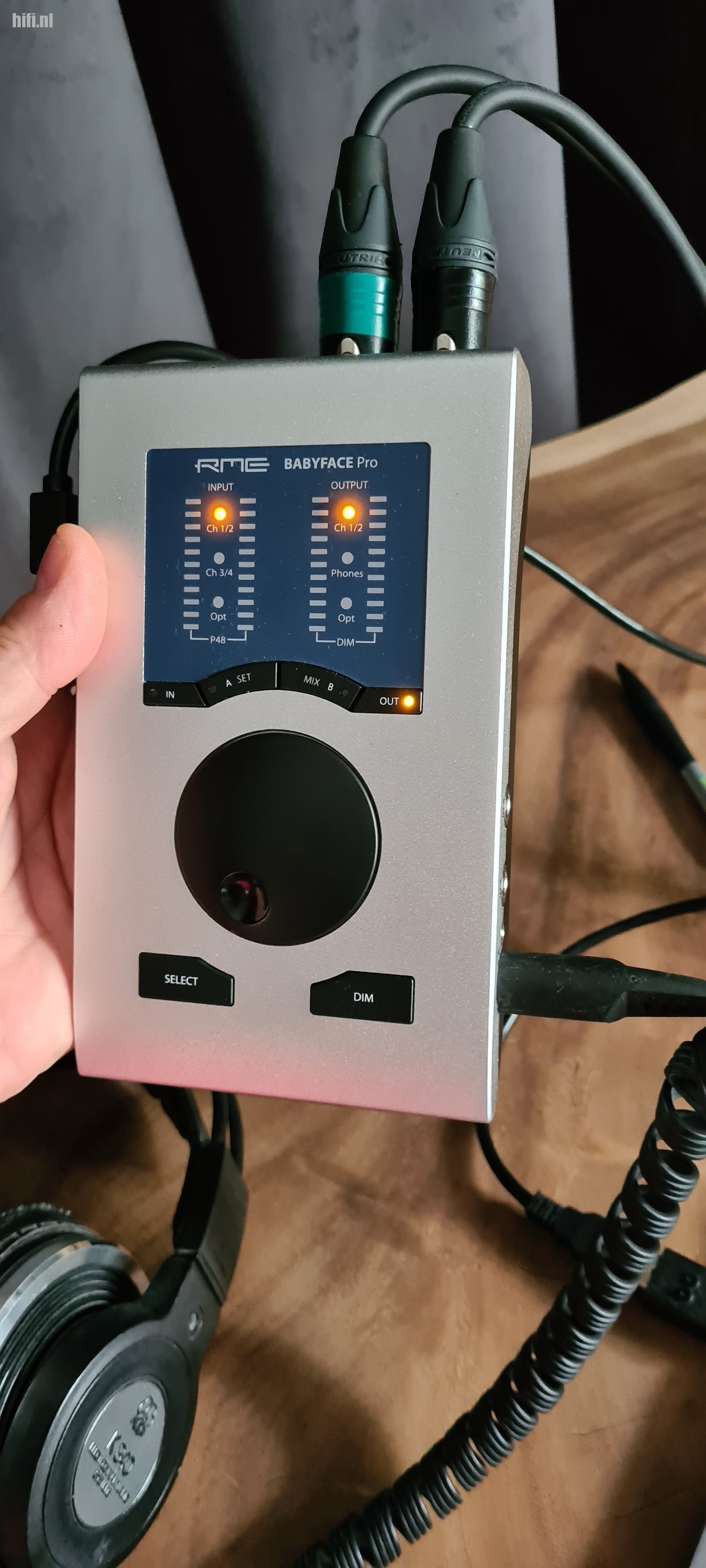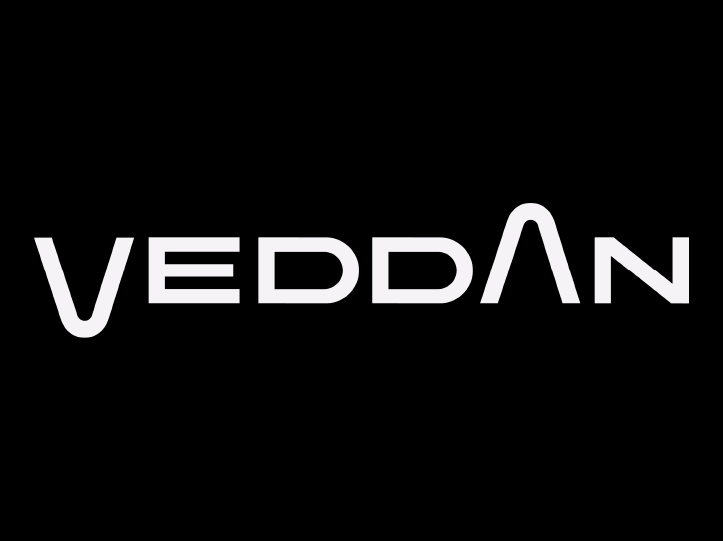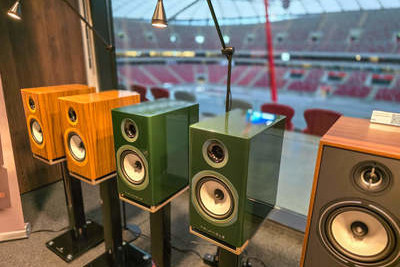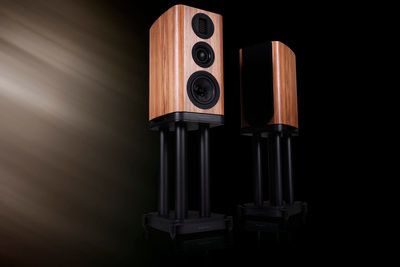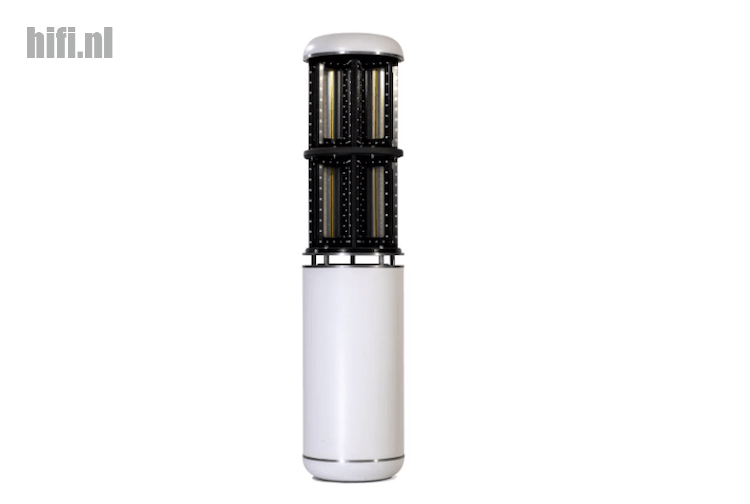
The Dutch loudspeaker brand Veddan invited us in the autumn of 2019 for a product presentation at a special location, and since the beginning of this summer, the various models of the new brand are now widely available. As we've already announced that we have a HiVisit on the agenda, it is high time for a visit to Veddan in Doetinchem where we learn everything about the Veddan Origin. | Vertaald door Veddan, het NL-artikel vind je hier.
Unfamiliar with what awaits me at the “Achterhoekse” designers and builders of the Veddan speakers, I am on the road for HiFi.nl. Soon I will discover an active loudspeaker system that has not only been developed by Veddan for years, but is also so innovative that there is no comparable system in the world. Step away from the principle of a woofer with a dome tweeter, if necessary with a mid-tone reproduction, rather look for similarities with magnetostats. Having introduced the world to Oscar Heil’s Air Motion Transformers, MBL’s round beams, Ohm Speakers’ Walsh drivers, electrostats, horns and more, Veddan has taken an unique path with an astonishing result. “Veddan” means “keep going” in Achterhoeks, a more suitable name can hardly be found (the Achterhoek is a cultural region in the eastern Netherlands, red.).

Veddan Origin
The Veddan Origin originated in the brain of André Kamperman, a music lover from an early age, admirer of the better audio products, self-builder of loudspeakers and former user of Magnepan magnetostats. Coming up with a unique product is one thing, bringing it to the market is a completely different discipline. A collaboration was found with the Achterhoekse company IF-Adamas BV. A company where innovation is embraced and further developed, advice is given on Computer Aided Manufacturing, where marketing and web design are integrated and where production can take place. IF-Adamas BV is also a leader in the market of 3D printers, which is extremely suitable for manufacturing parts of the Veddan Origin speaker. The company has solid ground under its feet, Achterhoekse sobriety and the courage to invest for years in a loudspeaker with unique potential.
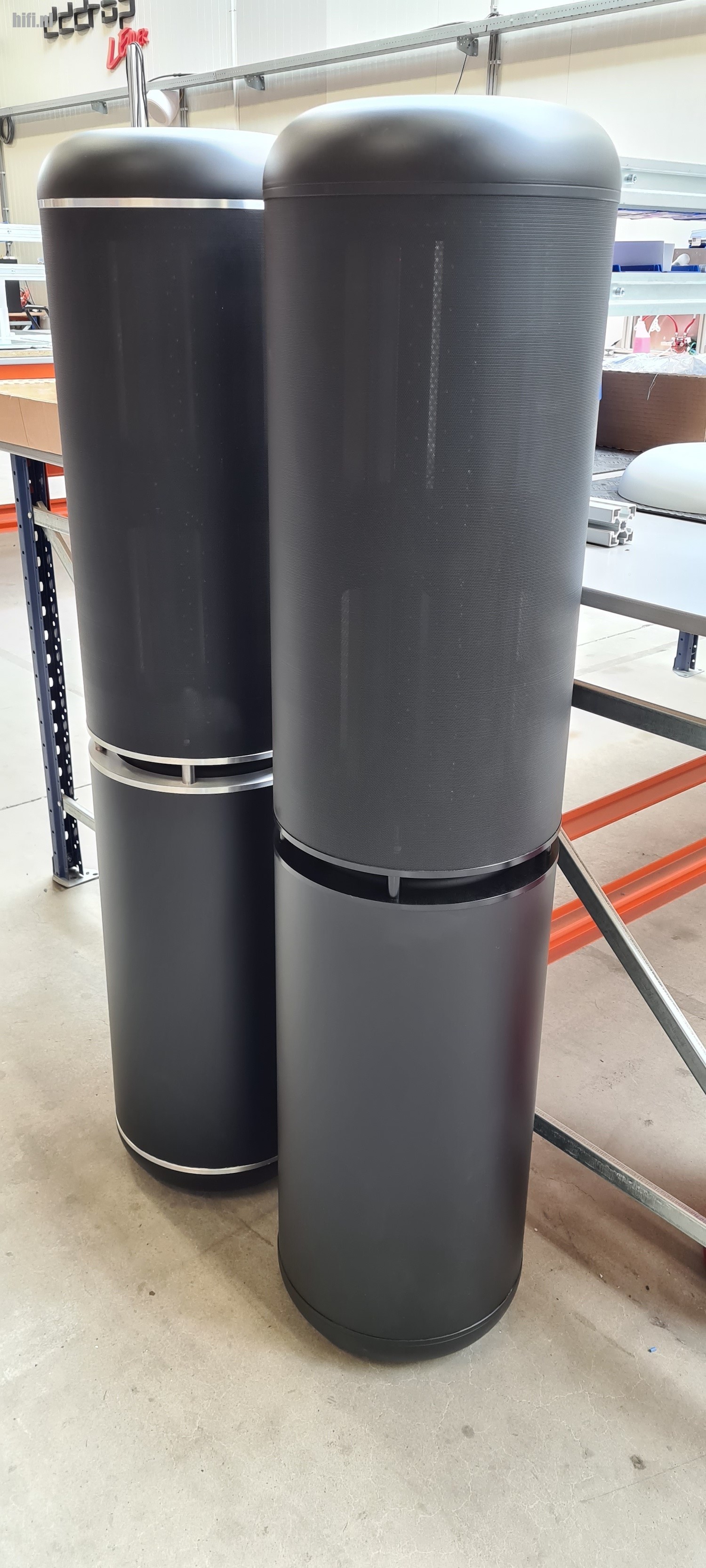
The Veddan Origin uses Veddan Sound Modules for the mid and high tones. In a metal, triangular frame shaped like a high pie slice, a magnetic strip is rigidly mounted to move in and out stretched membranes half the thickness of a human hair to the left and right of it. This movement converts electrical energy into sound without causing a phase shift across the frequency band. The combination of very powerful magnets and the ultra-light membrane ensures speed and minimal distortion.
In the Origin, two sets of five of these elements have been placed, five in an arc of 270 degrees and five more underneath. This makes the Veddan Origin an omni-directional speaker with most of the energy going forward, left and right. Only a small part is radiated to the rear.
The module is made of metal and 3D printed plastic for the rigidity and suspension of the membranes. The 10 modules in total are closed at the top with a solid, centimeter thick “lid” made of milled aluminum. The whole is surrounded by a perforated circular curved plate so that the sound can escape in all directions and an aesthetically pleasing appearance is created. The cylinder is then placed on a second cylinder that is both a base and a (sub)woofer. The transition frequency between woofer and sound modules is 150Hz.
Bass and electronics
A 10-inch SEAS woofer from the top series of this manufacturer is mounted horizontally on the top of the bottom cylinder. The closed cylinder forms the cabinet of the woofer. Within the metal wall, 3D printed plastic bushings are used, double-walled and filled with damping mass to make resonances impossible. Damping material that has been chosen experimentally in hours of listening sessions and in measurements. Although low tones are always omni-directional, the horizontal arrangement of the woofer positively contributes to the radiating behavior of the Veddan Sound Modules. The two cylinders on the top of each other, with base and space between woofer and sound modules, make the Veddan Origin 130cm high and give a diameter of 30cm. Class-D amplifiers are active in the bottom cylinder of the 40kg system, with a total power of 3000 watts.
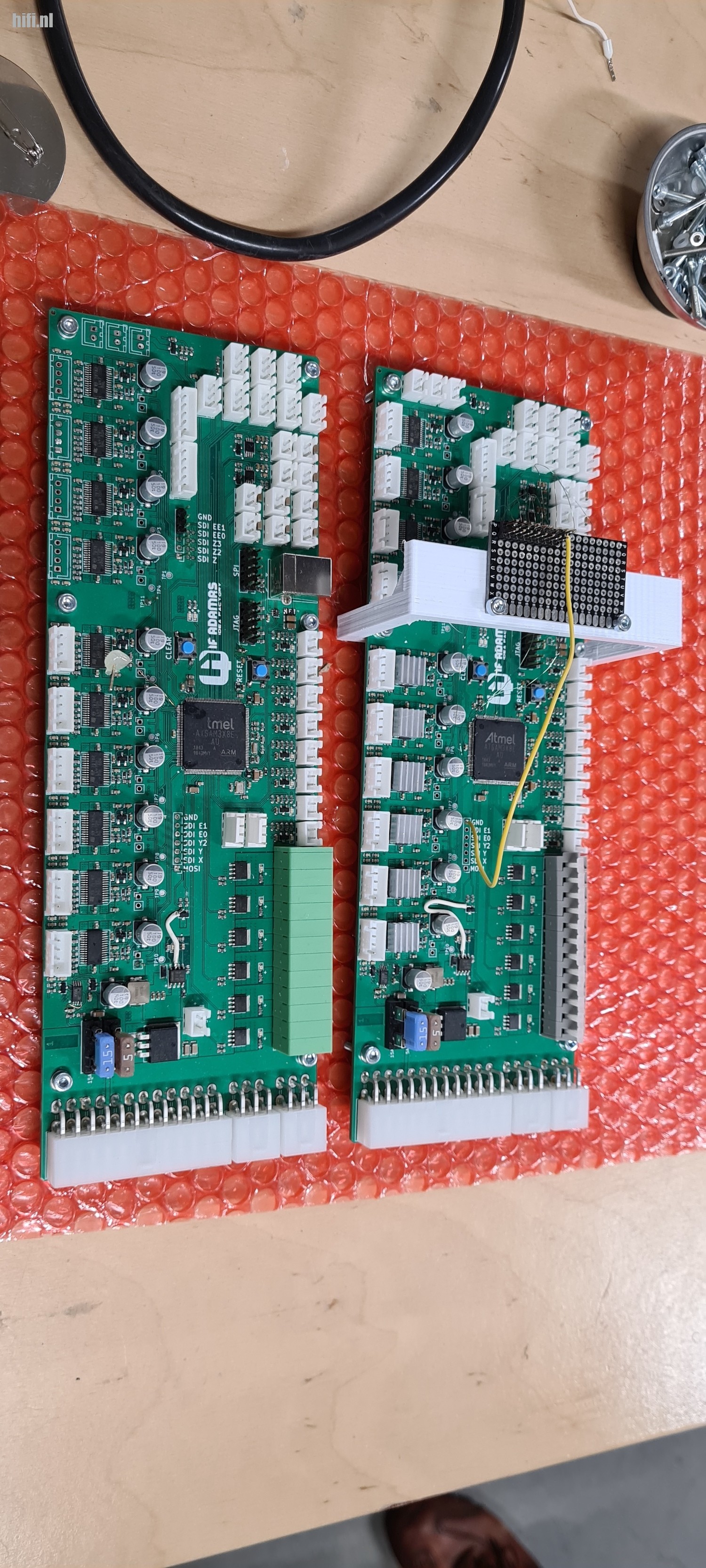
Veddan claims that under normal circumstances only 10 percent of that total power will suffice, so that the amplifiers always show completely linear behavior and not the typical characteristics of a cross-section Class-D amplifier. These amplifiers are manufactured for Veddan in Europe, where exactly they are kept secret.
More electronics are incorporated in the base. In this way the Veddan Origin can be analog linked to a conventional preamplifier or DAC with volume control by means of XLR connections. In the Veddan Origin, a conversion to digital takes place, so that the crossover and the DSP can take place in the digital domain before the analog power from the amplifiers drives the loudspeakers units. A transition from RCA to XLR allows the use of unbalanced equipment. The second option to control the Veddan Origin is via WiSA, a wireless system with a resolution of 24 bit over 96kHz. Veddan has chosen the Axiim Q UHD box with HDMI inputs. In addition to stereo, the Axiim Q UHD is suitable for 7.1 uncompressed surround playback. The electronics in the Veddan Origin allow the speaker to be adapted to the acoustics of the listening room. For a fixed surcharge, the space is measured at the customer, the adjustments are made in the displays and the end result is evaluated together with the customer.
Naming the key points
In summary, Veddan has managed to reduce the mass of the membranes for speed and low deformation. By applying 10 Sound Modules, the total membrane surface is large. By not using passive filters, the phase behavior is optimal. Strong magnets drive each Sound Module, creating an efficient loudspeaker with low distortion and absolute symmetry. The only conventional factor in the Veddan Origin is the woofer. Every other part is conceived, developed and manufactured for the Veddan Origin. The result: uncolored sound reproduction, detailing, omni-directional and phase-like.
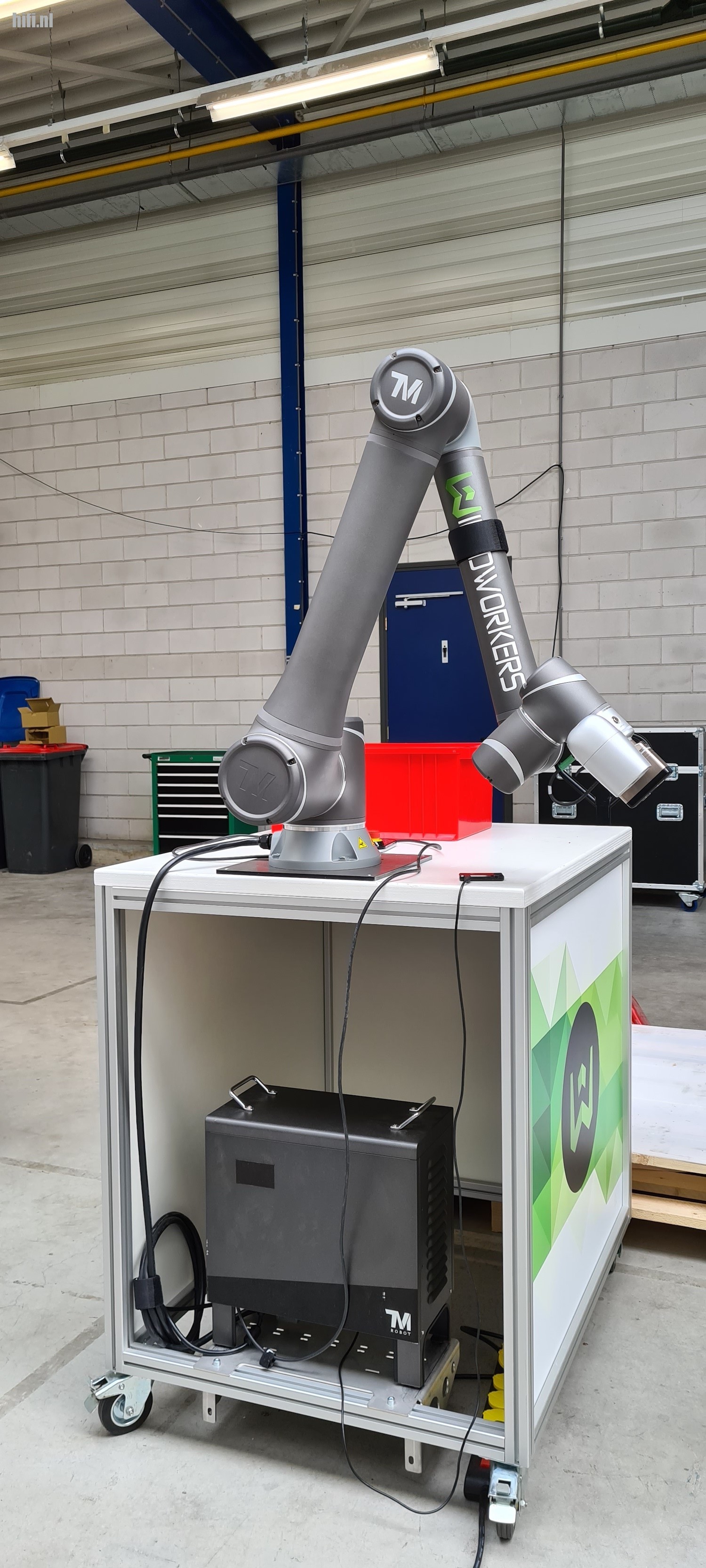
After a tour of the company and after talking extensively about the Veddan Origin reproducers, we move to a location nearby to enjoy the speakers in peace. A visit like this only makes a listening impression possible and is not a review that has been listened to for at least two weeks in your own environment. Almost comparable to a shop visit.
The listening room has a strange shape. The speakers are set up on a floating floor above an office space. A kind of balcony with a hard floor. This means that the speakers are far from the glass walls, set up freely for stereo reproduction. Closed curtains hang in front of the glass. The energy radiated backwards by the Origin will in this way have little influence in the space. The roof slopes upwards at an angle, ideal for avoiding standing waves. During the first session, the Veddan Origin’s are controlled with a RME DAC of German (professional) origin, with the music stored on a notebook. Long XLR cables run from the DAC to the displays. In the second session, the WiSA box was used and a mobile to select the music. In addition to the stored music, Tidal was an inexhaustible source for my own test tracks.
Solo and instrumental
Visually, it is striking that the opening between the woofer and sound modules emits light, adjustable to the desired color or intensity and fully dimmable. Although the effect is nice and will certainly appeal to a part of the potential buying audience, you do not expect that from a speaker in this price range. Then the Veddan Origin plays the first sounds, I close my eyes and concentrate fully on the reproduction of Jan Akkerman’s guitar recorded live in a theater. Things like the promised speed in the reproduction and unlimited dynamics are the first to notice. In addition, the realistic sounding body of the guitar, forming one whole with the strings.
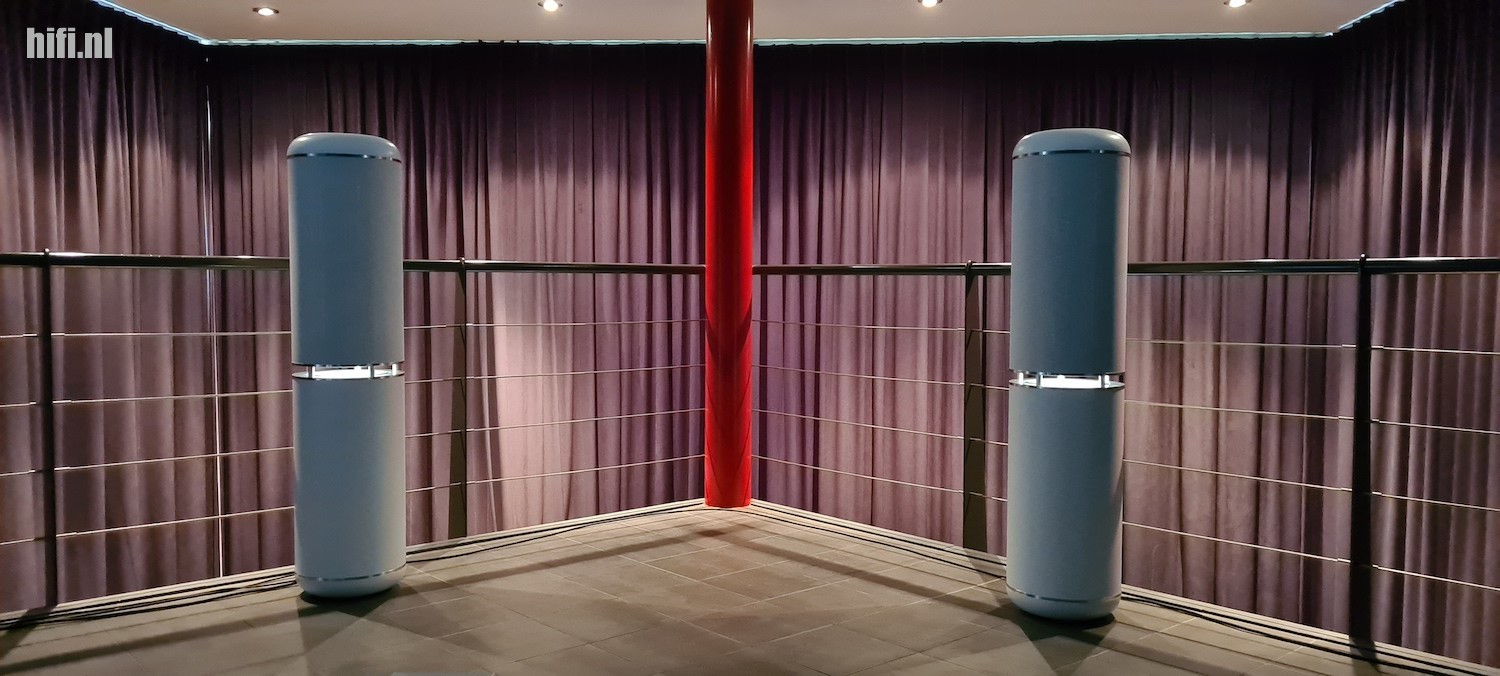
Now a solo instrument is not the hardest to play, with the exception of a piano, and we ask Leonard Cohen to sing for us. Anyone who thinks that a subwoofer is still necessary with a Veddan Origin is wrong. This active system goes deep into the lower tones. Deep and tight, sometimes with so much energy in the recording itself that the low end can become overwhelming. The cause lies in the studio and the mastering of the recording, don’t look for that in the Veddan. The radiating behavior of the reproducers means that they immediately disappear from the picture, as befits a good reproducer, music is created in space that cannot be traced back to the sources. Compliment for how the Veddan Origin achieves that.
A second flaw in Cohen’s track is that his voice was recorded way too big, too big to make him a real person. The Origin mercilessly exposes such errors. The American singer Haily Reinhart shows that a voice can be tailored in a natural and easy reproduction. The Veddan Origin could also do well in a studio for those reasons. You can hear how close Haily is to the microphone and that an echo has been placed on her voice that is missing on the piano that accompanies her. The mix is hard and rough, that is not disguised either. Johnny Cash is raw and unedited in a shot taken in a mountain cabin. Again a feeling arises of having to do with reality in this uncolored rendering. Mouth noises are so natural that they give Johnny’s voice “realness”. A neat height image has been created, as could be seen before. Turning back the volume level makes Cash’s voice a bit smaller without changing the sound. Playing softly or loudly does not change the sound of the Veddan, which is another compliment and a bonus point in my notebook.
From vibraphone to fat sax
Koji Tamaki, unknown to me, tries to make a dream come true on vibraphone with his jazz compositions. The bass goes very deep, is at the same time very overwhelming and possibly too far in many living rooms. Especially if the recording is very dark. But as indicated, the Veddan Origin can be tuned to the listening room. Percussion and vibraphone are lifelike, there is no lack of dynamics at all. A slap on the drum can be heard effortlessly loud if necessary. Metallic sounds come in like hammers. In busy passages the display does not close, each instrument can and remains individually followed and has a rock-solid place.
Very well known is “Liberty” performed by Anette Askvik. Low notes in the beginning of the track really rumble and growl. Small noises immediately come to the fore. Her voice stays beautifully at the right format, even at exactly the right height. Her voice is filled with feeling and emotion, something that only a few systems show. A cello turns on nice and fat, perhaps extra turned on by the listening space that is unknown to me.Piano is sometimes very tender and thin, which fits perfectly into the atmosphere of the track. Time and time again, the second voice really separates from the first, they are separated without any problems. The low power also makes the sax nice and fat and it is as if a thunderstorm is rumbling in the background. The whole is rich in detail and nowhere sharp. Due to the free arrangement, I hardly notice the influence of the room on reverberation, the reproduction is dry as it originally will have been.
Integration
You want to rate the lower tones? Then I’ll give you ALicia Olatuja. A less good speaker can be chased with it, the Veddan Origin delivers quality in the right proportion, which gives the speaker a high ranking. The bass drums have rarely been heard so clearly behind the bass. Very pointed percussion on drums and cymbals. Olatuja’s trained voice is clean and realistic. The Veddan Origin keeps the rhythm well, sounds lzy and yet catchy. Diana Krall tightly puts high piano notes in place, low tones float loosely through the space. Krall itself is tightly positioned. If the lower tones are right recorded, it is guaranteed to go well on the Veddan Origin. The dynamics are still effortless without changing the sound, only the volume goes up and down. Playing smoothly and with ease, with lots of peace and quiet without being obscured by a bad power supply or digital noise.
The music is completely separate from the speakers. The integration between the reproducers has not yet been specified. The transition between the fast mid/high modules and the woofer is seamless. No woofer running after the parade. At the end of the track, a piano note fades very, very slowly away. Finally, Jacques Brell starts with a musical saw on “Ne me quite pas”. Very nice with 100% atmosphere, it can’t get much more French. Brought very small to full power.
Wireless action
Finally, a number of the aforementioned tracks play again, but then via WiSA over the Axiim box. Music reaches the Axiim wirelessly with Chromecast on 24/96. Nice is the connected TV that shows the covers on the screen. The larger stereo image that is now being created is striking, the music was often between the reproducers, now it extends beyond the physical setup. In my ears, the reproduction as a whole is grainier in nature than via analogue XLR connection, the definition decreases, at the same time music shows a tendency to close up more quickly. That is very clear on a track by ERA. The Veddan Origin sounds more digital along the WiSA road in my opinion, which diminishes the charm of the speaker. There is less atmosphere with less feeling.
In a technical sense there is nothing to criticize, the reproduction remains at a very high quality level. It just plays more technical. I imagine a situation where the audiophile in the house plays his music via the analog connection, while the housemates less affected by the quality of the playback strive for the convenience of music services and operating the Axiim box with their phone. Best of two worlds can be realized in a single system with the Veddan Origin.
After one day
It should be clear, the Veddan Origin is not a cheap system. The quality of the components as shown in the factory makes a low price impossible. The Sound Modules and the woofer that are used are expensive, and no cuts have been made on the amplifiers, DSP and filters. The finishing and choice of materials are first-class, the assembly is seamless, as is the high-quality finish in white or black. As with any speaker, it is all about the result we hear, something the Veddan Origin scored highly in the two listening sessions. Try to remember a speaker that has unbridled dynamics, without the slightest traces of distortion. A speaker that performs at a high volume level, just as it continues to impress the listener at a low level. Convenience, tranquility, detail and a quiet background, the Veddan Origin makes it possible. The Sound Modules provide a reproduction without coloring and whoever moves his head while listening will notice that the phase behavior and the radiation may be examples for others.
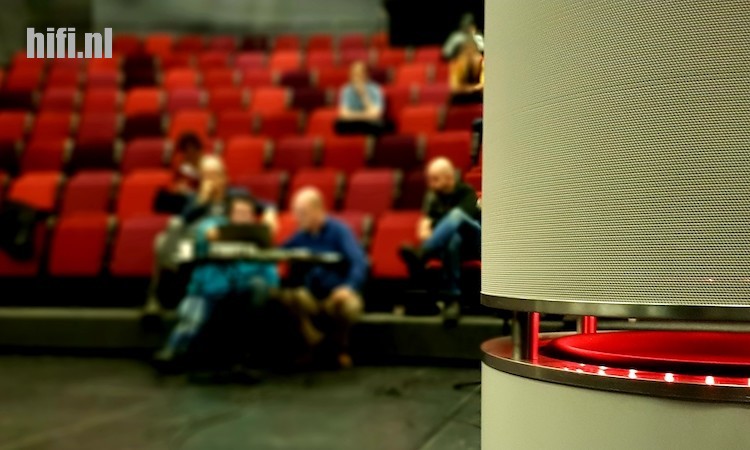
The technology in the speaker has been refined and optimized over the years, thanks to the trust and patience of the parent company. It is to the credit of the makers that they only come onto the market when something is fully ready, at this price level you can expect that, unfortunately it is not always the case. The Veddan Origin belongs to the top segment of speakers, at least that is the impression left behind from the listening sessions in De Achterhoek. The unique in-house development of the Sound Modules, heavily patented by the makers to be sure, goes a lot “Veddan” (further) than just taking a few tweeters of the shelves and tinkering a filter. Using it in a speaker leads to a piece of technology made for high-quality music enjoyment. The Veddan Origin is, partly due to its own dimensions, usable and intended for somewhat more spacious living rooms, up to placement in large spaces or even professional use. | www.veddan.com


